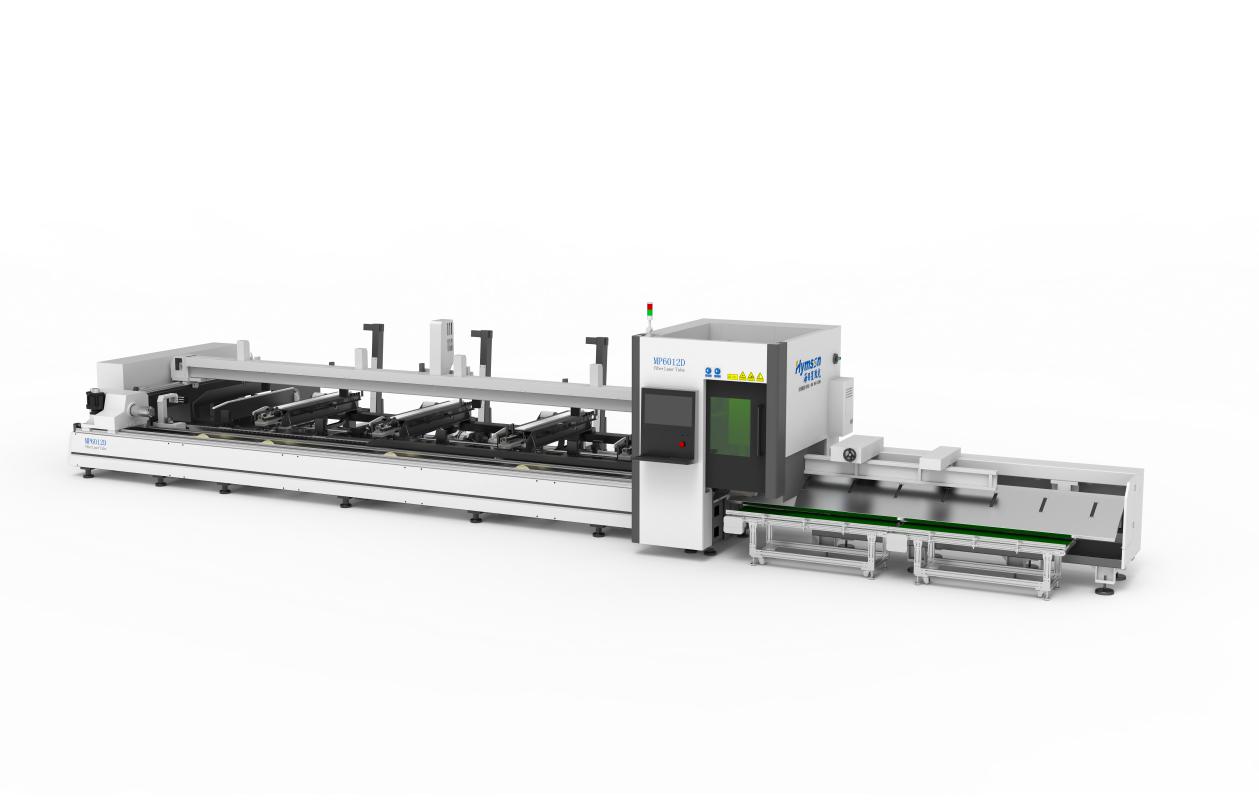在當今的精密製造時代,雷射切管機脫穎而出,成為各行業提高效率和精度不可或缺的工具。這些尖端機器利用雷射技術的力量,以無與倫比的精度對金屬管進行精確成型和修整。為了更深入研究雷射切管機的世界,讓我們探索它們的組件、工作原理、應用以及更多相關資訊。
雷射切管機的組成部分
雷射切管機由幾個精心設計的關鍵部件組成,以確保最佳性能和精確切割能力。
- 其核心是雷射光源,產生切割各種材料所需的高強度光束。
- 管材處理系統有利於工件的無縫操縱和定位,而切割頭裝有複雜的光學元件,可實現精確的光束聚焦和傳輸。
- 控制系統協調整個切割過程,以最精確的方式協調運動和調整。
- 此外,強大的冷卻系統可防止過熱,確保穩定的性能,而整合的安全功能則優先考慮操作員的健康。
雷射切管機的類型
雷射切管機有不同的配置,每種配置都根據特定的製造要求量身定制。光纖雷射切管機配備先進的光纖雷射技術,具有卓越的速度和精度,非常適合複雜的切割任務。
相反,CO2 雷射切管機利用二氧化碳雷射的功率,在各種材料和厚度上提供多功能性。對於那些尋求性能和靈活性之間平衡的人來說,混合雷射切管機結合了光纖和 CO2 技術的優勢,滿足不同的生產需求。
工作原理
雷射管切割機的操作圍繞著一系列精心策劃的事件,從產生高度聚焦的雷射光束開始。
然後,該光束被引導至工件,精確定位並夾緊在切割區域內。當光束接觸時,會產生強烈的熱量,沿著指定的切割路徑熔化並蒸發材料。
同時,即時操縱管材,確保最佳切割角度和軌跡。在整個過程中,先進的監控系統提供即時回饋,實現精確調整以保持切割精度和效率。
應用領域
雷射切管機的多功能性遍及各個產業,徹底改變了製造流程和產品設計。在汽車領域,這些機器在以無與倫比的精度製造複雜的底盤零件和排氣系統方面發揮了重要作用。同樣,在航空航天應用中,雷射切管機在製造飛機和太空船的輕質而堅固的結構方面發揮關鍵作用。
此外,在建築領域,這些機器有助於客製化金屬型材和框架的製造,並加快施工進度,同時確保結構完整性。除了這些行業之外,雷射切管機還應用於家具製造、醫療設備生產等領域,展現了其多功能性和適應性。
雷射切管機的優點
採用雷射切管機具有許多超越傳統製造方法的優點。
- 首先,它們實現高精度切割的能力可確保最大限度地減少材料浪費並最大限度地提高生產效率。
- 此外,它們在處理各種材料(包括不銹鋼、鋁,甚至特殊合金)方面具有多功能性,使製造商能夠探索新的設計可能性並擴大其產品範圍。
- 此外,這些機器固有的自動化功能簡化了生產工作流程,降低了勞動力成本並提高了整體生產力。
- 加上更快的生產率,雷射切管機成為企業在當今動態的市場環境中尋求競爭優勢不可或缺的資產。
購買前要考慮的因素
在投資雷射切管機之前,企業必須仔細評估幾個關鍵因素,以確保最佳的投資回報。
首先,預算分配應與所需的機器規格和功能保持一致,同時考慮前期成本和長期營運費用。此外,考慮生產量和要求也很重要,因為它決定了滿足需求所需的機器尺寸和容量。
材料類型和厚度在選擇合適的雷射技術和功率輸出時也起著至關重要的作用。此外,必須考慮可用空間和設施限制,以確保無縫整合到現有工作流程中。最後,評估售後支援和服務的可用性對於解決購買後可能出現的任何維護或技術問題至關重要。
結論
雷射切管機代表了精密製造的典範轉移,為不同產業提供了無與倫比的精度、多功能性和效率。隨著技術不斷發展,採用雷射技術和自動化的最新進展對於尋求在競爭日益激烈的環境中蓬勃發展的企業至關重要。
分享這篇文章:


